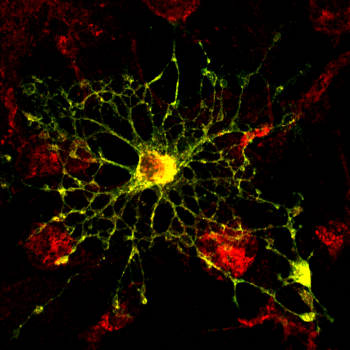Popular Science covers two papers that appear in Nature Biotechnology on the topic of creating new brain cells. Researchers have developed a method to take skin cells from mice and rats and turn them into oligodendrocytes, which are the type of cells damaged by multiple sclerosis and other disorders.
From Popular Science:
The type of cell that the researchers made is a young, immature version of an oligodendrocyte. Oligodendrocytes normally wrap the nerve fibers of the brain and spinal cord in a protective coating called myelin. With certain diseases, though, people lose that coating or suffer damage to it, which can lead to severe symptoms, such as losing control of the arms and legs.
One major idea researchers have for curing such diseases is adding myelin back by transplanting young, immature oligodendrocytes into the patient. The cells are then supposed to mature and wrap themselves around exposed nerve fibers they find. (Older, more mature oligodendrocytes don’t seem as prone to finding and sheathing exposed nerve fibers.) The idea has worked in lab animals genetically engineered to not have myelin—wohoo!—but there’s a drawback. Until now, researchers generally made oligodendrocytes from stem cells taken from embryos. That’s fine for mice and rats, but it’s difficult to harvest and grow enough embryonic human stem cells for transplants in people.

Comments are closed.